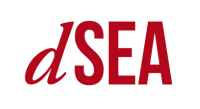List of journals for selection procedures and academic career advancement
Any 'List of Journals' has imperfections and cannot find unanimous agreement. Aiming to achieve transparency and time-consistency in the selection procedures involving members of the department and external candidates, as well as to provide comparative information on the editorial placement of publications, our department (through the work of the ‘Upgrading’ Commission coordinated by Professor Cainelli and composed of Professors Bertoni, Bonfatti, Di Maria, Fabrizi, Gianecchini, Pugliese and Rocco, and discussions with members of the department) has identified the following lists as references:
- for the Management area, the CABS-AJG ranking (5 tiers: 4+, 4, 3, 2, 1). Journals not in the CABS list, enter as a 6th tier below the CABS ranking.
For the CABS-AJG list see here
- for the Economics area, the ECO-dSEA ranking (3 tiers: A**, A*, A) defined according to various national and international inputs. Journals in Economics not present in the first 3 tiers are placed in lower tiers (A1-A4 and B1-B3). Journals in the Management area, not present in the ECO-dSEA ranking, and present in CABS tier 4+, are placed in tier A*; those in tier 4 are placed in tier A; those from tier 3 to band 1 of CABS are placed in bands A1-A3; the remaining ones in B1.
For the ECO-dSEA list, see here
These rankings (CABS-AJG and ECO-dSEA), will be updated periodically and approved at the Departmental Council.
These rankings provide a reference for the hiring committees that are responsible for dSEA selection procedures, and should be interpreted in consideration of Italian rules establishing that the selection commission is sovereign.
CABS-AJG Ranking
The CABS-AJG list is the most widely adopted reference in international business schools. It is meant to assist researchers in making well-informed decisions on which academic journals they wish to publish in. It provides details on a wide range of journals relevant for business and management in which academics can seek to publish their research.
CABS-AJG ratings are based on peer, editorial and expert reviews after analysing hundreds of publications and are supported by statistical citation information.
The CABS-AJG, unlike other journal ratings, does not rely exclusively on bibliographic metrics. The journal ratings are also based on consultations carried out by the ‘Scientific Committee’ with expert fellows and academic associations to determine the relative ranking of journals in each subject area.
ECO-dSEA Ranking
The ECO-dSEA list of journals was generated by the Upgrading Commission following a lexicographic criterion. First, the commission defined the journals considered most prestigious (based on reputation and prestige in the academic community). These are placed in A**, A* and A tiers. Then, the remaining journals were sorted using a bibliometric indicator.
The ranking in A**, A* and A is based on a qualitative assessment of the journals' prestige among the international scientific community. This assessment was based on other institutions/committees’ lists (CABS-AJG, Univ. Bocconi, Univ. Bologna, list of the outgoing dSEA Advisory Board) and on contributions in published works (Ham, Wright and Ye (2022), see Table B1, Column 3).
The A* tier results from the outgoing dSEA Advisory Board list complemented by several journals present in the A+/A1 range of the Univ. Bocconi and Univ. Bologna lists; the A tier contains a number of journals present in the A/A2 ranges of Univ. Bocconi and Univ. Bologna, and good quality journals in research fields present in our department (but poorly represented in other lists).
Ranking in the lower tiers (A1-A4 and B1-B3) of journals not included in A**, A* and A, followed a bibliometric approach and was based on the SJR 2021 indicator, Scimago as follows:
1) The domain of the journals taken into account is the one set by GEV13 in VQR 2011-2014. At that time, the GEV had surveyed all the journals in which Italian economists had published in the previous 5 years. This choice avoids the problem of determining what is and what is not an Economics journal, which would arise if one were to apply the rankings available in WoS or Scimago (for example, in Scimago, Journal of Health Economics is classified as Health Policy and not Economics, and so many other journals are not considered Economics).
2) each journal in 1) has been associated with the SJR of 2021.
3) the journals in 1) were then sorted and their percentiles determined (separately for Economics and Economic History).
4) the tiers were defined according to the percentiles in 3), following the distribution of GEV 13a in the VQR 2015-2019, i.e.: first decile (top) in tier A1; second decile in tier A2; third decile in tier A3; 4th and 5th deciles in A4; 6th and 7th deciles in B1; 8th,9th and 10th deciles in B2; journals in 1) lacking SJR were placed in B3.







